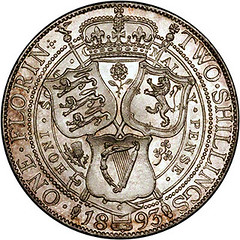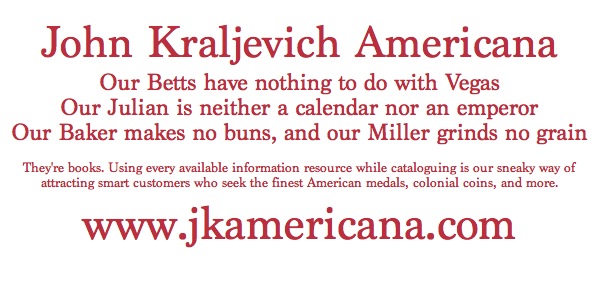
PREV ARTICLE
NEXT ARTICLE
FULL ISSUE
PREV FULL ISSUE
A January 5, 2019 post on Greg Ruby's Fouth Garrideb blog on the numismatics of Sherlock Holmes provides a great primer on the pre-decimal British monetary system and its accompanying coin and denomination names and nicknames. It's a lot to keep straight! With permission, here's an excerpt. -Editor
 
The British monetary system was undoubtedly complicated. A pound was divided into 20 shillings, a shilling into 12 pennies, or pence. But the working classes, and even many middle-class folk, had little contact with pounds. Ordinary Victorians drew their wages and salaries, paid their rent, bought their groceries – in fact lived their lives – in shillings and pence. A penny had real buying power, and two coins of even smaller value were in daily use: the halfpenny, pronounced hayp’ney, and the farthing, worth a fourth of a penny. (Farthing was a corruption of “fourthing.”) Using coppers required a special vocabulary. The sum of 2½ pence was called twopence halfpenny (pronounced tuppence hayp’ney), 2¼ pence was tuppence farthing, and 1½ pence was called, oddly, three haypence. If a woman wanted to buy a halfpenny’s worth of tea she would ask for “a hayp’orth of tea.” Silver coins began with the threepenny piece, commonly called the thruppenny bit. Next came the sixpence and the shilling. The sixpence was a small coin, about the size of a dime. The shilling, as mentioned above, was worth 12 pence, and there were 20 in a pound. The sixpence and the shilling had nicknames: tanner and bob, respectively. When Holmes summoned the Baker Street Irregulars in The Sign of Four they traveled to 221B by Underground. Wiggins, their leader, reported, “Got your message, sir, and brought ‘em on sharp. Three bob and a tanner for tickets.” The florin was a silver coin worth two shillings. For some reason British people rarely used the word, preferring to say “two shillings.” The next higher silver coin was the half-crown, worth two shillings sixpence – two and six in everyday speech. Dr. Watson, in “A Scandal in Bohemia,” commented that the King of Bohemia’s notepaper “could not be bought for less than half a crown a packet.” The crown was worth five shillings. There is no mention of it in the Canon, which is not surprising because people avoided it. It was big and heavy, and not convenient to carry in the pocket. Dividing the shilling into twelve pence made for complicated transactions. People had to become adept at reckoning in their heads. If a woman bought an article that cost four shillings fivepence and gave the shop assistant a coin worth ten shillings, she would mentally calculate how much she was owed in change: five shillings sevenpence. On paper, the price of her purchase would be expressed as 4s. 5d. (The “d,” symbol for the penny, was borrowed from a Roman coin called the denarius.) More simply, the sum could be called four-and-fivepence and written 4/5. The basic gold piece was the sovereign, worth one pound or twenty shillings. The word sovereign referred to the coin itself. “Three pounds” could mean that amount of money in any form – in notes, in coin, or written in an invoice. “Three sovereigns” specifically meant three gold coins, each worth one pound. There was also a half-sovereign coin, worth ten shillings. The slang term for the pound, quid, is still heard today. Paper money was issued in ascending values up to £1,000. The notes were issued not by the British Treasury but by the Bank of England. A few other banks also had the authority to issue paper money. Be sure to read the complete article online for a number of interesting quotes from the Sherlockian canon, and a great explanation of why luxury items were priced in guineas, and how "Guineas conferred status on the persons who charged them and the persons who paid them." -Editor
To read the complete article, see:

Wayne Homren, Editor The Numismatic Bibliomania Society is a non-profit organization promoting numismatic literature. See our web site at coinbooks.org. To submit items for publication in The E-Sylum, write to the Editor at this address: whomren@gmail.com To subscribe go to: https://my.binhost.com/lists/listinfo/esylum All Rights Reserved. NBS Home Page Contact the NBS webmaster 
|